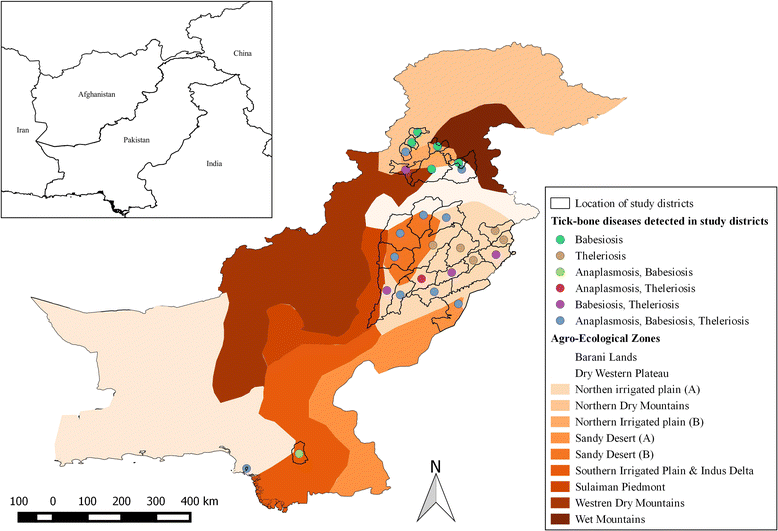Tick-borne diseases of bovines in Pakistan: major scope for future research and improved control
- PMID: 25994588
- PMCID: PMC4443554
- DOI: 10.1186/s13071-015-0894-2
Tick-borne diseases of bovines in Pakistan: major scope for future research and improved control
Abstract
Ticks and tick-borne diseases (TBDs) affect the productivity of bovines in tropical and subtropical regions of the world, leading to a significant adverse impact on the livelihoods of resource-poor farming communities. Globally, four main TBDs, namely anaplasmosis, babesiosis, theileriosis, and cowdriosis (heartwater) affect bovines, and the former three are of major economic importance in bovines in Pakistan. Given that the livestock sector has become an integral part of Pakistan's economy and a large number of dairy cattle are being imported into the country, in order to meet an increasing demand of milk and milk products, it is timely to review current status of bovine TBDs in Pakistan and to identify gaps in the knowledge of TBDs and their control. Although there has been a recent increase in the number of studies of TBDs in this country, information on their prevalence, distribution, tick vectors, and control is limited. This article provides a brief background on key bovine TBDs and ticks and reviews the current status of bovine TBDs in Pakistan to identify gaps in knowledge and understanding of these diseases, propose areas for future research and draw attention to the need for improved tools for the diagnosis and control of TBDs in this country.
Figures
References
-
- Pakistan Economic Survey 2013–14. Ministry of Finance, Islamabad: Government of Pakistan; 2014:23–41.
-
- FAO. Zia U, Mahmood T, Ali MR. Dairy Development in Pakistan. Rome: FAO; 2011.
-
- Wynn P, Harris D, Moss R, Clem B, Sutton R, Doyle P. Report on dairy mission to Pakistan. mission carried out under the auspices of the Australia-Pakistan agriculture sector linkages program Canberra, Australia, 2006; p. 6.
-
- Perry BD, Randolph TF, McDermott JJ, Sones KR, Thornton PK. Investing in animal health research to alleviate poverty. Nairobi, Kenya; 2002
Publication types
MeSH terms
LinkOut - more resources
Full Text Sources
Other Literature Sources
Medical


